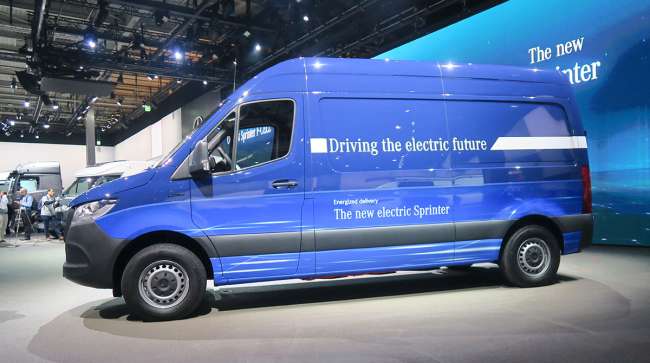Redesigned Sprinter Offers Enhanced Suite of Technologies

HANOVER, Germany — The redesigned Sprinter van from Daimler Trucks and Buses gives commercial customers a suite of technologies that offers a way for fleet managers, vehicles and drivers to stay connected via a system tailored to their needs, the company said during the IAA Commercial Vehicles show.
In a Sept. 19 presentation on the event’s first day of press conferences, Mercedes-Benz Vans head of marketing Klaus Meier compared the difference in the new Sprinter’s updated suite of technologies versus older models to the capabilities of modern smartphones compared with the earliest examples.

More From IAA 2018
“The Sprinter is to conventional vans what a smartphone is to a simple mobile phone,” he said. “Ten years ago it was a big revolution, and today we wonder how could we ever have done without it.”
He called the updated Sprinter — slated for introduction next year and sold in the United States under the Freightliner and Mercedes-Benz brands — as “the first of a new species — the van as a fully networked system solution.”
Via a permanent internet connection, the van links to customers through the company’s Mercedes Pro communications suite, which offers eight packages and a total of 18 different services, Meier said, including fleet management, navigation and driving-style analysis.
“Our customers can control orders online and send new routes to the vehicle, or check vehicle information such as location, fuel level or maintenance information,” he said.
Noting that online retailer Amazon.com plans to buy 20,000 of the vans next year, Meier said that the updated Sprinter offers “a completely new level of networking flexibility and, of course, profitability.”
It also will offer a new power option when the electric-powered eSprinter enters production next year. Designed for inner-city routes, the van can be spec’d for either higher payload or longer range, and 80% of its total range will be available after 30 minutes of charging time, said Benjamin Kahler, head of eDrive for Mercedes-Benz Vans.
“If electric mobility is to be successful, we need to offer industry-specific solutions that enable our customers to call up the full transport capacity” of a vehicle, he said. “It was important to us to make sure that our electric vans could match the conventionally driven variants in terms of utility and value.”
The company also showcased the Sprinter F-Cell concept, which combines fuel cell and battery technology in a plug-in hybrid vehicle. Configured to hold three hydrogen tanks, a fourth could be added to extend range, Kahler said. While the concept was outfitted as a camper, he said the setup also could work for other applications, including passenger transport.



